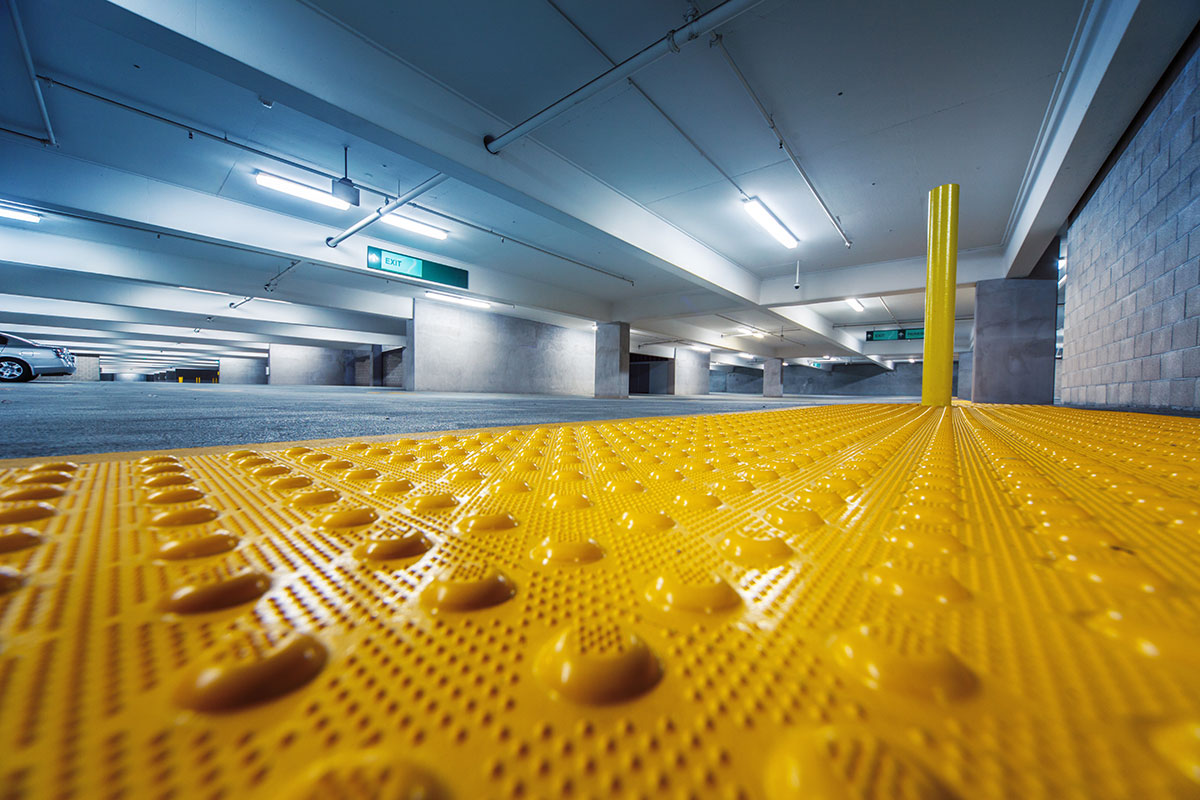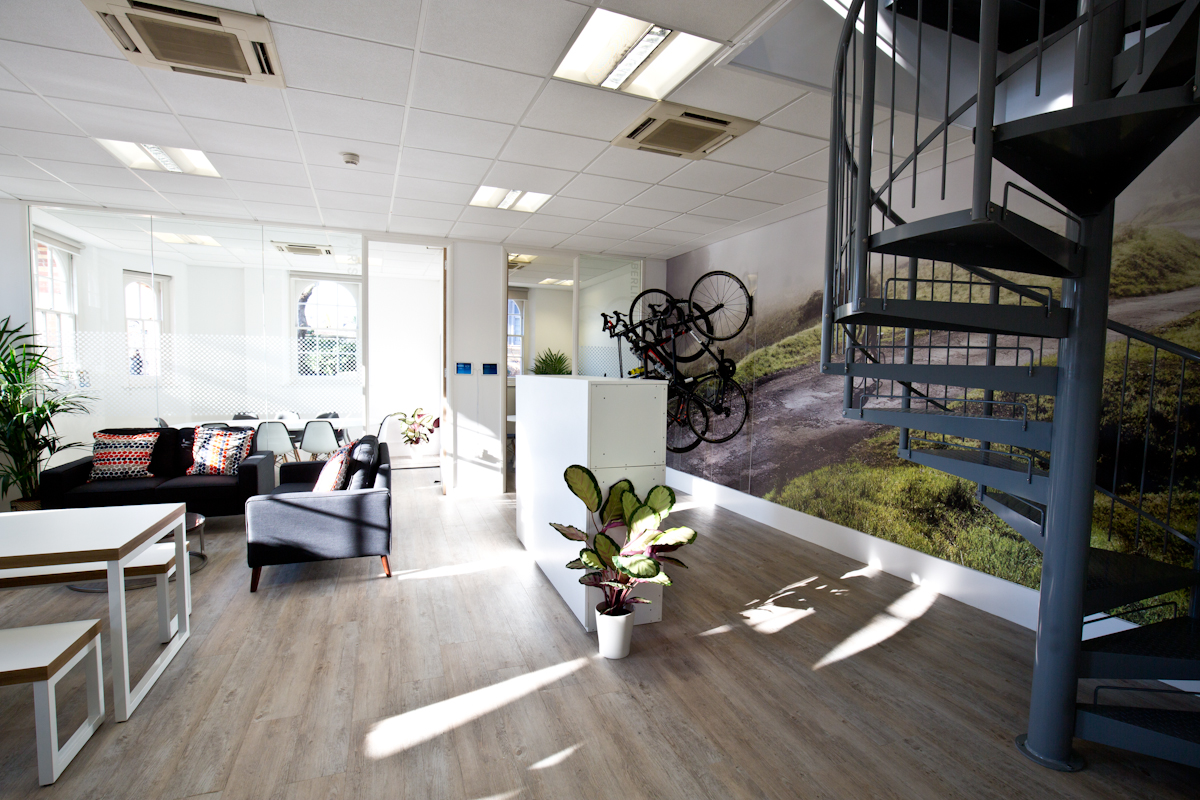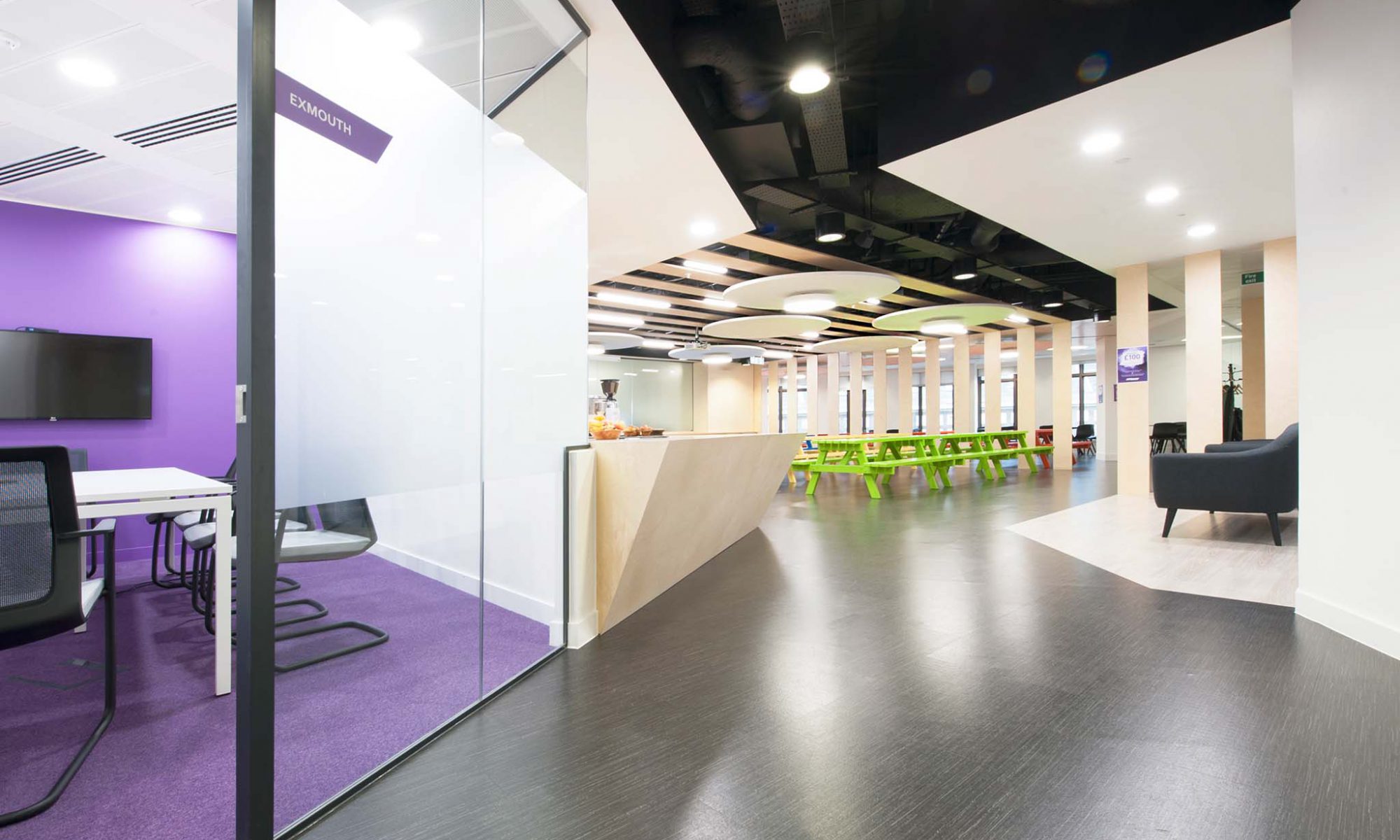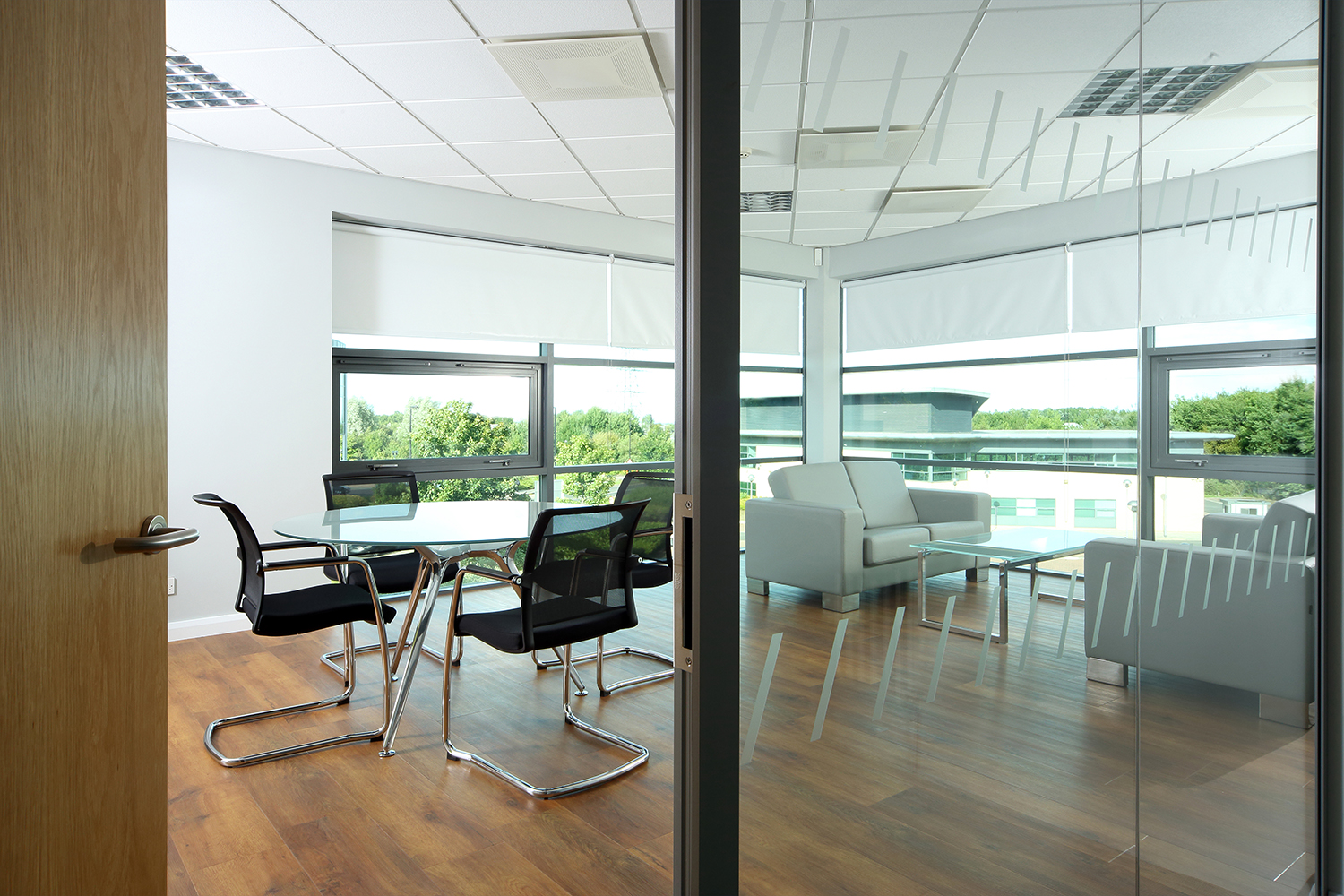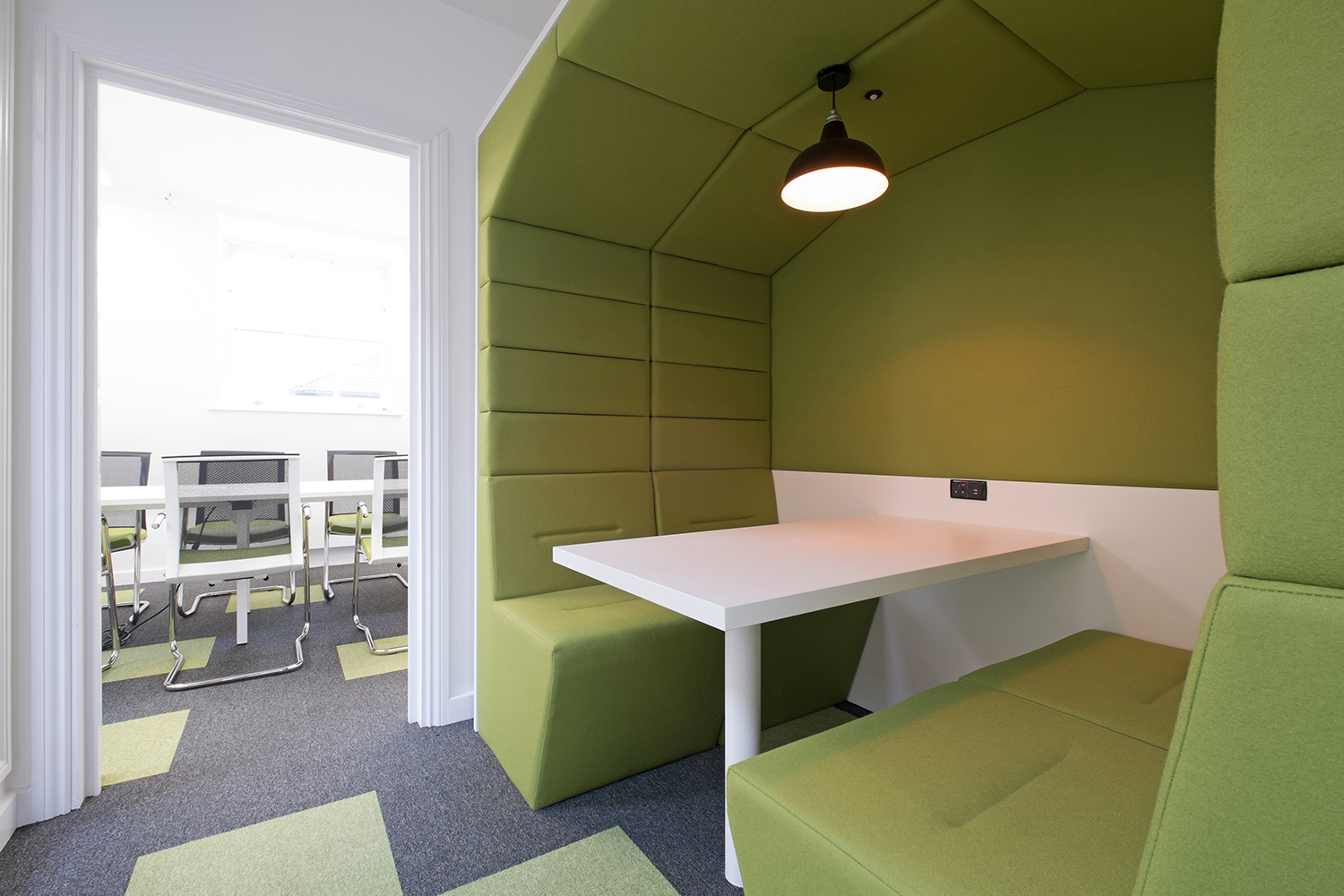Equality laws on building access require that you understand the importance of Light Reflective Value (LRV) and apply this knowledge to workplace interior design. This article provides guidance on these values, so your designs stay the right side of the law.
For a number of reasons, understanding the Light Reflective Value of your colour scheme is central to designing a new commercial space, or refurbishing an existing one. However, did you know that you could be in breach of legislation if you don’t apply it to entrances, exits and along walkways?
LRV is a long way from being simply a question of aesthetics or using contrasting colours to zone areas of your commercial, educational or health building. Understanding LRV and applying it to commercial design – including floor definition – could avoid fines of up to £50,000 under the Equality Act (2010) UK Building Regulations Approved Document M:2015 – ‘Access to and use of buildings’.
LRV and the Equality Act
First, a quick reminder of what LRV is. This is a universal measure of contrast between colours – LRV measures how much useful light gets reflected by specific coloured objects. But it’s not a measure of colour; it’s a measure of light and dark. The scale runs from 0 to 100 with pure black being 0 and pure white, 100. It is possible that different colours could have similar LRVs.
So what’s the connection with Equality?
The Equality Act requires that building owners and facility managers ensure that everyone – regardless of gender, disability or age – can access structures. That includes workplaces, education establishments and public buildings.
There are over two million people in the UK dealing with some degree of sight loss. By 2020, it is believed that this figure will grow by another quarter of a million.
To successfully move around, many rely on the LRV of surfaces, doors, stairs and so forth, to gauge gradients and changes in floor surface, or find features. Your interior design could have the same LRV level, regardless of the colour scheme you painstakingly chose.
Good practice for workplace interiors
The fact is that most people who are registered blind can actually discern colours. Less than 5% are totally blind. So, contrasting colours is important to the visually challenged, and accordingly the old DDA and the Equality Act, colour contrasting should involve colours whose LRV ratings are at least 30 points apart. This relates to things such as doors, doorframes and walls; floor/wall unions; walls and handrails, and walls and sanitary components.
What you also need to keep in mind is whether the objects are two or three-dimensional, whether surfaces are matt or gloss, and the use of metallic and non-metallic finishes. For example, a door and its handle may only need a 15 point LRV differentiation, as the handle structure is sufficiently contrasting with the two-dimensional door surface.
One of the key elements of building navigation and contrast, is, of course, the flooring. Think about creating sufficient LRV contrast between areas of raised flooring, steps, gradients or any safety flooring areas. This will ensure someone with a visual impairment can move around your premises unhindered.
Look, too, at the way your flooring contrasts with walls, rails and other structural definitions, to provide input on the dimensions of rooms and walkways in your workplace or public building.
So, for example, to meet the guidelines and ensure good practice for LRV, you may choose to have light walls, black fittings and a grey floor. This provides people with sufficient contrast to differentiate the room’s features and navigate around it more easily.
Where to get help on LRV good practice
Need more help in measuring and applying the principles of LRV to your choice of carpet tiles, vinyl or matting?
A Duraflor expert can provide you with the LRV information on all our flooring products and assist in choosing the right flooring for a particular project. Our sister company Artech offers a range of DDA compliant anti-slip inserts and risers.
